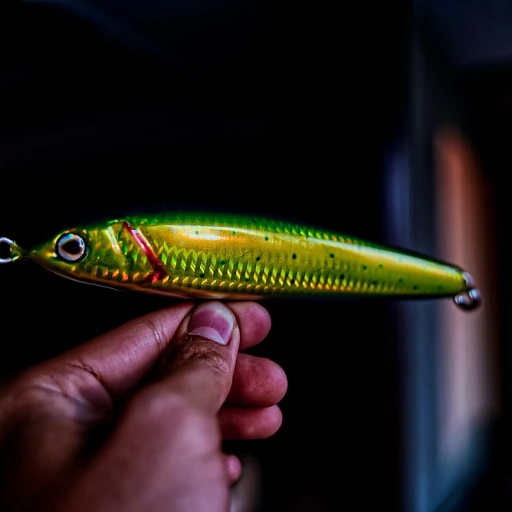Understanding the Role of a Boat Trailer Bow Stop
Importance of a Secure Bow Stop
A boat trailer bow stop is an essential component in ensuring the safety and stability of your boat during transportation. It serves as the first line of defense, preventing forward motion and maintaining a secure rest for the bow. Alongside other components like the winch, strap, and trailer parts, the bow stop works to safeguard your prized vessel from potential damage while on the road.
Using a reliable bow stop allows for peace of mind as you navigate your fishing adventures, knowing your boat is securely mounted. Without it, the trailering process could become unstable, increasing the risk of accidents or damage to your boat. Understanding the pivotal role it plays in your trailering setup is crucial to enhancing your overall fishing experience.
Moreover, selecting the correct bow rest is vital for compatibility with your specific boat and trailer. Options such as rubber blocks, bow rollers, or adjustable bow stops offer different levels of support and stability.
For those passionate about recreational fishing, the benefits of having a well-chosen bow stop extend beyond just security—they contribute significantly to the overall efficiency of boat handling. By ensuring your trailer includes durable and well-fitting structural components, you add another layer of safety to your fishing excursions.
Enhance your fishing experience by making informed decisions about top boat accessories that complement your bow stop selection.
Key Features to Look for in a Boat Trailer Bow Stop
Essential Characteristics of a Superior Bow Stop
When selecting a bow stop for your boat trailer, it's important to assess a few vital attributes that will contribute to its reliability and effectiveness. A quality bow stop not only secures your boat during transport but also helps protect your boat from potential damage caused by movement on the trailer.
- Material and Durability: Opt for a bow stop made from robust materials such as galvanized steel or sturdy rubber. These materials offer durability and can withstand the harsh conditions of saltwater and freshwater environments.
- Design and Compatibility: Ensure that the design of the bow stop is compatible with your trailer's roller post or winch stand. An adjustable bow stop can offer great versatility, as it accommodates various boat hull shapes and sizes, providing a snug fit.
- Ease of Installation: Look for a model that includes mounting hardware and is straightforward to install. This prevents the frustration of complex installations and ensures that you can secure your boat efficiently.
- Functionality with Existing Equipment: It’s crucial that your bow stop works seamlessly with your trailer's winch strap and roller, allowing for smooth launching and retrieval of your boat.
- Protection Features: A bow stop with a bow roller or rubber blocks can offer added protection, serving as a cushion for your boat’s bow against impacts during transit.
For those looking to have a full-featured recreational fishing experience with reliable gear, consider exploring suitable accessories like
Magma BBQ grills for boats, which complement the functionality of a well-equipped boat trailer, ensuring both safety and convenience on your fishing trips.
Comparing Different Types of Bow Stops
Assessing Different Bow Stop Options: Picking the Perfect Fit
Selecting the appropriate bow stop for your boat trailer can significantly impact your fishing endeavors. Here, we'll break down the different types of bow stops available and the situations in which each type excels.
- Rubber Blocks and Bow Rollers: These are among the most common options available. Rubber bow stops provide a gentle yet firm cushion for your boat, reducing the risk of scratches or damage when the boat is secured. They're usually more affordable and available in various sizes and hardness levels to match your specific needs.
- Adjustable Bow Stops: Ideal for those who need flexibility due to owning multiple boats or encountering varying water conditions. Adjustable designs allow for easy modification, accommodating different bow shapes and sizes. They typically include a versatile assembly with adjustable mounting hardware for customized fitting.
- Galvanized Metal Bow Stops: For those prioritizing durability and longevity, galvanized metal stops provide robust protection against the elements, especially saltwater corrosion. While they may be heftier on the wallet, their long-term resilience often justifies the investment.
- Stand Assembly with Winch Post: This option is excellent for a comprehensive setup. A winch mount with an integrated bow rest ensures a secure tie-down with a winch strap, providing dual functionality that can increase safety and stability during transport.
When comparing bow roller designs, consider the overall compatibility with your boat trailer's winch and stand assembly. Not all boat trailers come with a ready-to-use adjustable winch post or rubber blocks, prompting many anglers to add cart modifications such as a trailer winch or specific roller post assembly adjustments. You’ll find that your boat will rest securely, mitigating any undue strain on your trailer parts or winch strap during transit.
For further insights into maximizing your boating efficiency and navigating the vast array of
the differences in fishing methods, you may explore additional resources to enhance your decision-making process in securing the right bow stop.
Installation Tips for Your Boat Trailer Bow Stop
Proper Installation for a Lasting Bow Stop Setup
Installing a boat trailer bow stop correctly is crucial to ensure the security of your boat during transport. Here are some essential tips to help you with the process:
- Begin with the Right Tools: Before starting the installation, ensure you have the necessary tools and equipment. This may include wrenches, drill bits, measuring tape, and any specific items required by the manufacturer for the bow stop assembly.
- Assess Your Trailer Winch Assembly: The winch post should be stable and positioned correctly on your trailer. The correct placement and firmness are vital for secure mounting and optimal performance of your bow stop.
- Align and Mount: Position the bow roller directly on the winch stand assembly. Adjust the height and alignment so that the bow rest assembly firmly supports the boat's bow when secured. This alignment helps to prevent unnecessary movement during transportation.
- Secure with Mounting Hardware: Use strong mounting hardware such as galvanized bolts and nuts to fix the bow stop in place. Ensure the hardware is tightened properly to withstand road vibrations.
- Test the Setup: Once installed, gently rest your boat onto the trailer, checking how the bow rests on the bow stop. The bow strap or winch strap should pull the boat snugly against the stop without causing undue pressure.
- Adjust as Necessary: Depending on the type of stop, whether it's an adjustable bow stop or a rubber block type, you may need to make slight adjustments. Each boat trailer setup can vary, so modifications ensure the best fit and protection for your boat.
- Conduct Regular Checks: After your first few trips, check the tightness of the hardware and the condition of the bow roller or stop. Components can loosen over time, and a quick inspection can save you from potential issues on the road.
Maintenance and Troubleshooting Common Issues
Efficient Maintenance and Troubleshooting Techniques
Maintaining your boat trailer bow stop is essential for ensuring it functions smoothly and prolonging its lifespan. Regular inspections and timely interventions can prevent potential issues and enhance your fishing excursions. Here are some practical tips to keep your bow stop in optimal condition:
- Regular Cleaning: Saltwater and dirt accumulation can cause corrosion, especially on galvanized surfaces. Rinse your bow stop, trailer winch, and winch post with freshwater after each trip to prevent rust and build-up.
- Inspect for Wear: Regularly check the bow roller and rubber blocks for signs of wear or damage. Replacing these parts promptly prevents further wear on your boat's bow and ensures secure mounting hardware.
- Tighten Bolts and Nuts: Loose hardware can compromise the integrity of the bow stop assembly. Periodically inspect and tighten all bolts and nuts, ensuring the adjustable bow rest and post winch remain secure.
- Lubricate Moving Parts: Moving components like the adjustable winch mount may benefit from lubrication. This can reduce friction and make adjustments smoother during your boat loading and unloading processes.
- Inspect the Winch Strap: A frayed or damaged winch strap can be a serious safety hazard. Regularly inspect for signs of wear and replace it promptly to ensure it can handle the weight of your boat.
- Troubleshoot Common Issues: Occasionally, you may encounter issues with the alignment of your bow rest or roller post. Re-evaluate the stand assembly and make necessary adjustments to keep everything securely in place.
By implementing these practices, you can keep your boat trailer parts in excellent condition, ensuring a seamless and hitch-free fishing experience every time you hit the water.
Top Recommendations for Boat Trailer Bow Stops
Top Picks for Reliable and Durable Bow Stops
When selecting a boat trailer bow stop, consider opting for tried-and-tested options that provide security and longevity. Here are some top recommendations to fulfill those requirements:
- Rubber Bow Stops: Known for their shock-absorbing properties, rubber bow stops can accommodate various boat sizes and trailer types. They offer a smooth landing for the bow while preventing damage.
- Adjustable Roller Bow Stops: These versatile stops provide flexibility, allowing you to tailor the fit for your specific boat. They utilize a durable roller mechanism that smoothly guides your boat into position.
- Galvanized Steel Bow Stops: Durability is the hallmark of galvanized steel. Such bow stops resist corrosion even when exposed to saltwater, ensuring a long-lasting fit for your boat trailer.
- Bow Rest with Stand Assembly: These options often come with included mounting hardware and can be effortlessly added to existing winch post setups. The stand assembly adds an extra layer of adjustment and stability.
- Winch Strap-Compatible Bow Stops: These stops work seamlessly with existing trailer winch systems, offering enhanced stability and security during transit. Incorporating features like a winch strap and winch stand can further fortify your setup.
Each of these options addresses key considerations like durability, fit, and ease of use. When matching your preferences with these choices, ensure the bow stop selected can withstand frequent use and fits your boat's specific needs. Keeping these tips in mind will enhance your boating experience, making each trip smoother and more enjoyable.

